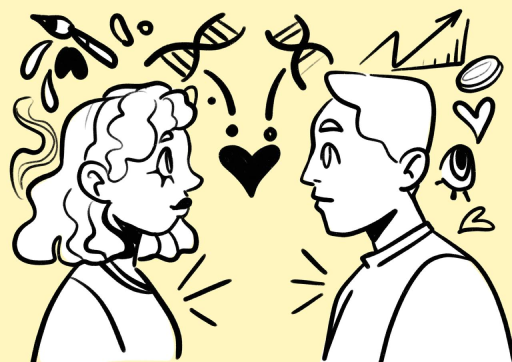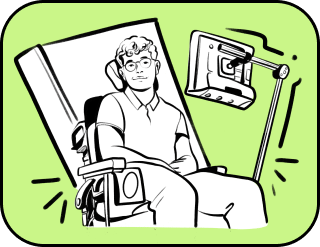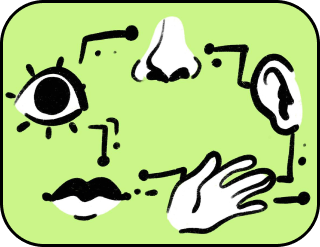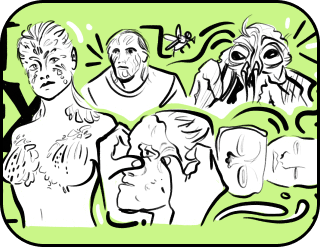How to comprehend dopamine heaven
“Within every person lies the ‘feminine’—to bring order to the world and make it perfectly understandable, and the ‘masculine’—to start playing in it anew each day as if it were a magical game. Those who understand this are truly happy.”
Found online
Centuries ago, the decisive factors for marriage were often benefit or the strengthening of family alliances. (As the saying goes, “Good things aren’t called a ‘marriage’ for no reason.”) Think of the famous tragedy of Romeo and Juliet, the mismatched marriages between rulers of different countries, or the hasty and unhappy unions of literary characters.
“After the emperor—father of the girl—passed away, she was sent to Japan at the age of 13. By the decree of Japanese Empress Teimei, Tokhye was married off to a representative of the Japanese aristocracy, Takeyuki. The marriage became a trial for both. The princess fell into depression, and her husband was openly disheartened by the forced union.”
There are stories with happier endings, but blind unions are quite the gamble.
Years have passed, and today, each of us is given the opportunity to approach the choice of a partner more carefully. Even science, which once seemed distant from matters of the heart, now offers its solutions for finding one’s true match. So, should you trust your personal instincts when choosing a partner, or is it better to turn to digital technologies?
As usual, we offer two answers to this question, and they’re described below.
It was always the two of them, and then they met—she from Venus, he from Jupiter. Each had their own plans, dreams, aspirations, and visions of the future. Love at first sight. Everything seemed perfect.
But at some point, the young man and woman decided to intertwine their destinies and began contemplating an alternative future together. (After all, they say, “Good things don’t come without their challenges.”) What made these young people change their plans?
Instincts: Nature’s Blueprint
Thanks to the instincts granted by nature, we select partners for the continuation of our species. When evaluating a potential partner, the brain gives us a signal: “Yes or no.”
Before delivering this verdict, the brain meticulously scans the potential mate and sends information to the body. Everything matters—the tone of voice, testosterone levels, eye color, and even scent.
The Science of Attraction
Scientific studies reveal that men with high testosterone levels often possess deep voices. Elevated testosterone enhances strength, endurance, muscle mass, and libido—qualities that women find especially appealing. Symmetrical facial features are interpreted by the brain as signs of the absence of genetic mutations that might be passed on to offspring.
Certain physical characteristics also point to hormonal levels. For example, broad shoulders in men suggest higher testosterone levels, while women with a wider hip-to-waist ratio are perceived as having greater reproductive potential.
The Role of Scent
Body odor instantly signals a partner’s genetic compatibility, thanks to “trace amines,” which either attract the ideal partner for offspring or repel those with incompatible genomes.
Each person carries unique bacteria that process amino acids on the skin, creating an individual scent. This is just one mechanism for body odor, and the brain actively searches for “the one” perfect aroma.
Research shows that evolution has fine-tuned us to be drawn to people whose DNA and immune systems are the polar opposite of our own. This helps avoid inbreeding and ensures better immune defenses for offspring. The brain works tirelessly to detect a DNA antithesis to our own.
In essence, the brain sifts through all these signals and points us toward the most suitable partner—the one who offers the best chance for creating a healthy new resident of the planet.
But We Don’t Want to Listen to the Brain. We Want Love.
Character plays a significant role in choosing a partner. Kindness, as one of the key traits, has been ingrained in our evolutionary criteria. In primitive societies, life with a kind and caring person was far more comfortable and secure than with someone selfish and cruel.
The amine structures that attract us to a partner resemble the structure of dopamine, which predates the discovery of the so-called happiness hormone. Consequently, when we encounter an ideal genetic match, we feel a surge of affection. The genetic technology of partner selection under dopamine’s influence can convince any brain that this partner is the most important thing right now.
Two hearts meet, and dopamine spikes as sharply as blood pressure upon opening a utility bill.
Dopamine generally provides the push to achieve goals, creating desires and cravings. But this hormone has a downside—it’s addictive. An elevated production of dopamine makes a person more prone to impulsive actions and risky behavior, driven by the need to win over the object of their desire. The thrill of the chase consumes them.
However, when the “chemistry” fades along with the rose-tinted glasses, a very different person stands before us.
— Who are you, Beast?
— Oh, come on, it’s me. The one you love more than life itself.
— How you’ve changed…
Dopamine is Only for the Chase
Dopamine is produced during the anticipation and thrill of pursuit. Once one partner secures recognition and receives their long-awaited reward, the relationship transitions into a period of calm and stability, governed by serotonin.
Serotonin plays a critical role in bodily functions. It has a calming effect, reducing anxiety and unease, while elevated serotonin levels are often accompanied by a sense of euphoria. Furthermore, serotonin helps regulate libido.
Some might label this serotonin phase as “boredom” in relationships or “waning feelings,” longing for the risk and passion they once had. For others, serotonin-fueled contentment is more than enough to continue building a shared future.
However, relationships aren’t the only source of dopamine. Studies show that love for pets can evoke emotions almost equal to those in monogamous relationships. Additionally, dopamine can be derived from sports, hobbies, fulfilling work, good sleep, and delicious food.
When dopamine levels are maintained through a balanced life, withdrawal takes a back seat. This is when mindfulness emerges.
Freed from the influence of scents or hormones, emotions return to the rational mind, which begins to analyze the complete picture of the relationship. It’s at this moment we truly start contemplating the future—whether being with this partner is comfortable and whether it’s worth continuing to burn fuel on the shared orbit.
Physical attraction undeniably influences partner selection, but the evolution of a relationship depends on numerous other factors: attachment styles, shared interests and values, the partner’s reliability, and various social dynamics.
When Relationships Begin
As relationships take root, alongside the fear and uncertainty, attachment styles can emerge. These attachments stem from both childhood experiences with parents and the aftermath of previous relationships. Negative experiences may create detachment, while positive ones can lead to paralysis. Much also depends on an individual’s worldview and perceptions of relationships in general.
You might say, “But what about love at first sight? When two people meet, fall in love instantly, and live happily ever after?” Sure, that might happen. But, hand on heart, could someone build a successful business without understanding the products, resources, and processes needed to create, store, and deliver those products? Unlikely. Similarly, a person who hasn’t thoughtfully prepared for a relationship is unlikely to sustain one.
Attachment to a person alone isn’t enough. There must also be an attachment to stability and routine: not waking the neighbors with screaming matches, not storming out of the car in a rage, not packing bags over minor disagreements, not drinking excessively, not smashing dishes if someone is an hour late from work. In short, it’s about mastering the art of living a rather mundane, dare I say, serotonin-fueled life.

Our ancestors sought love through newspaper ads; we rely on social networks.
It’s hard to measure how such modern methods influence the accuracy of choosing the right partner. The internet doesn’t transmit primary brain signals, leaving us dependent solely on dopamine. Online communication also makes it easier to block unwanted interactions, offering a safe haven for the shy to initiate conversations remotely.
But how exactly do technologies help us find “the one” to share forever with?
A random movie generator selects your evening entertainment based on your preferences and rarely disappoints. A “magic 8-ball” app decides which job interview you should prioritize. A meal planning app offers the perfect dinner menu. Each step forward seems to pull us further from divine intervention.
In this age of innovation, countless apps cater to our romantic pursuits. Dating apps are old news, so progress has moved ahead, delivering compatibility-analyzing tools. “If even the Terminator could fall in love, why not trust ones and zeros?” thought a guy as he tapped “Download.”
One such compatibility-based partner search app conducts a 10-question psychological test. Using AI-driven algorithms, it processes the responses and reveals the truth about potential partners: how open they are to new experiences, their level of responsibility, agreeableness, emotional stability, and sociability—down to a percentage point.
Developers of these applications claim that their compatibility tests are designed in collaboration with psychologists and based on scientific research. Engineers analyze correlations between facial features and the five major personality traits: neuroticism, extraversion, openness, agreeableness, and conscientiousness.
The app then suggests compatible matches, allowing users to narrow their choices down to a few individuals they might meet in person.
If a date ends with a shared goal that resonates with both partners, it’s safe to indulge in a brief dopamine high before grabbing a metaphorical bucket and spade to start building your “happily ever after.”
Should the app’s compatibility algorithm work flawlessly, resulting in potential partners who each seem like the perfect candidate to build a future paradise with, there’s always the option to turn to a “Magic 8-Ball” app for guidance.
How does it work?
Getting an answer is simple: you can either click the center of the ball or type a question into a special field and press “Ask.” Inside the ball is a dark liquid—reminiscent of Carter’s cylinder—where a 20-sided polyhedron floats. Each triangular face bears an answer. The ball has a clear window through which the response appears when the ball is shaken. The two hemispheres are tightly sealed to prevent air from entering.
Though the Magic 8-Ball isn’t yet capable of predicting the future, it offers straightforward “yes” or “no” answers—why not let it decide whether a second date is on the horizon?
And why not let astrological apps take the reins, offering partner suggestions based on numerological and astrological compatibility? After all, who better to divine the mysteries of the heart than the stars?
Capricorn Jack seeks his soulmate among the Milky Way stars in the third house. Just enter your date of birth, and voilà—a partner with a 70% compatibility score is already knocking on your door.
Turning to technological solutions for choosing a potential life companion is reasonable—if the data you provide is accurate. However, people often tend to embellish their qualities or express desires they don’t truly possess. The result of compatibility built on illusions is easy to predict.
We’re completely honest with a nutrition app—sharing doctors’ recommendations and listing foods to avoid. We’re candid with a movie app, openly stating our mood and providing a list of favorite actors. But can we be just as truthful with partner-search apps? That’s a question no developer can answer.
And so, once again, we find ourselves caught in a lottery, where true desires are hidden, and false images take center stage.
Technological solutions only work for those who put in the effort. Seek, expand your social circle, communicate, and experiment. Good things take getting used to. That’s why some scientists recommend presenting yourself to someone you like at least three or four times—preferably in different ways. Let them “acquire the taste.”
Perhaps it’s time to log off the internet for today.

We illuminate scientific horizons with an intensity that rivals a laser.
Thank you!




